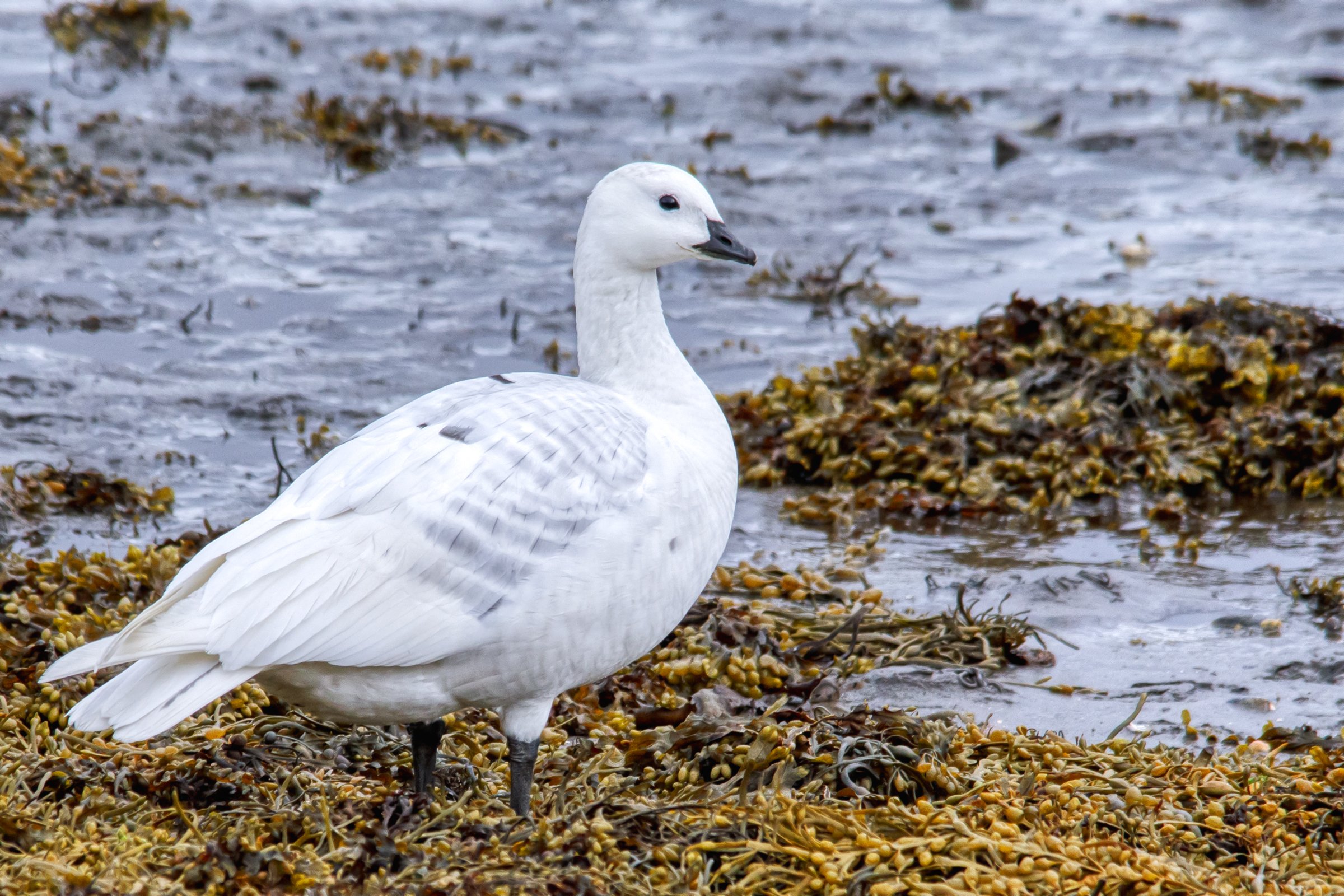Individual white barnacle geese have been occasionally visiting northern of Norway with the flocks for years now. They are characterised by pale feathers, but are not true albinos, as they have black eyes, beaks and legs.
These peculiar birds are the result of a genetic hiccup, called leucism. The standard black, grey and white gene is dominant in barnacle geese. An abnormality results in the white (or leucistic) gene which is double recessive. Of the three distinct breeding populations, we think that it’s only the Svalbard population that has ever thrown up this morph.
The barnacle goose is a medium-sized goose, 55–70 cm (22–28 in) long, with a wingspan of 130–145 cm (51–57 in) and a body mass of 1.21–2.23 kg (2.7–4.9 lb). It has a white face and black head, neck, and upper breast. Its belly is white. The wings and its back are silver-gray with black-and-white bars that look like they are shining when the light reflects on it. During flight, a V-shaped white rump patch and the silver-gray underwing linings are visible.
Barnacle geese breed mainly on the Arctic islands of the North Atlantic. There are three main populations, with separate breeding and wintering ranges - from west to east:
Breeding in eastern Greenland, wintering on the Hebrides of western Scotland and in western Ireland, population about 40,000
Breeding in southeast and northwest Iceland, population about 1000
Breeding on Svalbard, Norway, wintering on the Solway Firth on the England/Scotland border, population about 24,000
Breeding on Novaya Zemlya, Russia, wintering in the Netherlands, population about 130,000
A recent population, derived from the Novaya Zemlya population, has become established since 1975 breeding on the islands and coasts of the Baltic Sea (Estonia, Finland, Denmark, and Sweden), and wintering in the Netherlands and Germany. Its population numbers about 8,000.
All pictures are copyright © Patty Thorbergsen All rights reserved.
To request such permission or for further enquires, please contact: patty@thorbergsen.com
Previous post : May 15th, 2022




